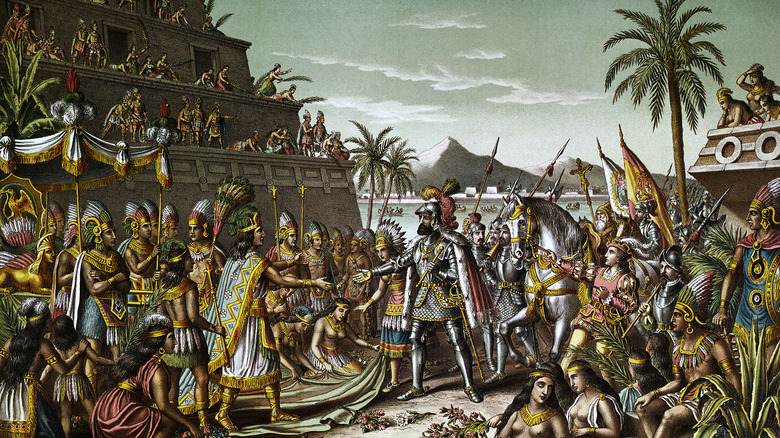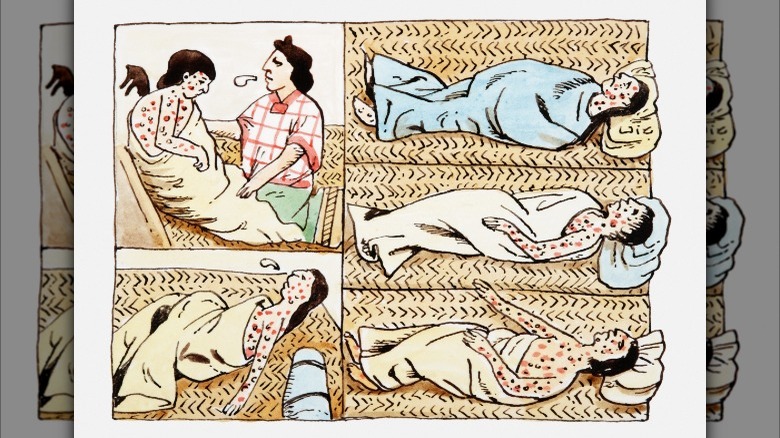Why Is Travelers' Diarrhea Called Montezuma's Revenge?
Many visitors to Mexico arrive with dreams of lazing on sandy white beaches beneath shady palms — only to find themselves confined to the bathroom with a crippling case of travelers' diarrhea. Although the condition is normally pretty easy to treat with antibiotics, it still presents a pretty unfortunate problem that is shockingly common today. According to the CDC, something in the region of 30-70% of travelers experience some degree of stomach trouble when they are away. Contaminated food and water, as well as poor hygiene habits, can all contribute to the onset of the runs, which are often a memorable feature of holidays south of the border.
Like Delhi belly or the Pharoah's revenge, "Montezuma's revenge" has become a phrase commonly used to describe this sorry state of affairs. Who exactly coined this creative euphemism is unknown, but the phrase appears to have come into common usage in the U.S. in the 1950s in papers like the Courier-Post, News-Press, Fort Worth-Star Telegram, and many others. Why did the expression come about, and why is it such a fitting form of vengeance for the angry ghosts of old Mexico?
Why Montezuma?
If you don't count his long-suffering Spanish-controlled successor, the powerful but ultimately doomed emperor Montezuma II was technically the last independent Aztec ruler of Mexico. If the Spanish had never arrived, Montezuma would probably be considered a talented leader — he expanded the borders of his realm and presided over the glorious engineering marvel that was the Aztec capital, Tenochtitlan. Unfortunately, Montezuma struggled to resist the technologically superior Spanish, who attempted to rip his kingdom from his hands.
Despite his generous attitude toward his guests, Montezuma did not survive the tumult the conquistadors created. After showering the Spanish with presents, the hapless emperor was taken hostage, and he finally died in a riot when the people of Tenochtitlan began to show their discontent with the whole situation. Cue the wholesale slaughter of the Aztecs and the downfall of their very civilization.
In later history, the long-dead emperor became a symbol of resistance for some people who were discontent with Spanish rule. According to legend, Montezuma will one day return to turf out the invaders and seek his revenge. This story of future vengeance was at some point equated with the terrible suffering that is often inflicted upon visitors' stomachs when they arrive in Mexico.
Fitting revenge
Travelers' diarrhea is sometimes caused by unsanitary food and water, but you may discover that locals rarely get sick in quite the same way, even when consuming the same lukewarm roadside tacos that knocked you out. That's because those who live in the region have simply adjusted to the types of bacteria commonly found there, making them more resilient to nasty bouts of sickness.
In this respect, the punishment surely fits the crime. In much the same way, Europeans brought a host of illnesses to the New World, including deadly smallpox, which indigenous Americans had no resistance to. Smallpox in particular was endemic in Europe, meaning that many of the Spanish invaders were immune or at least resistant to the virus. In 1520, the year that Montezuma died, smallpox wiped out a large chunk of the population of Tenochtitlan in one fell swoop and left many survivors scarred or blind. All things considered, if travelers' diarrhea is a form of revenge, tourists get off pretty lightly.


